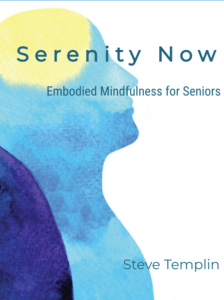Since all pain is registered in the brain, you can learn to dissolve both physical and emotional pain with awareness training.
Subtle changes in attention styles can create profound changes in how the brain functions. While pain is definitely experienced in the body, it’s the brain that ultimately controls physical and emotional suffering.
Stress triggers a narrowing of attention and focus that helps us address the nature of a specific threat. However, when that narrow style of attention becomes chronic it reinforces and perpetuates the neurology of the stress response and all of its ill effects.
The key to healing from most chronic, stress-induced issues, and pain in particular, is to learn how to relax that narrow attention style. While acupuncture can provide pain relief, sometimes immediately, brain training reprograms the brain to create lasting changes that can be maintained over time. This puts the power of healing into your own hands.
Some Background on Brain Training
While most meditation styles and mindfulness methods influence the brain, my favorite intervention for pain (and the simplest) is based, at least in part, on a process called Open Focus.
Open Focus was the discovery of Les Fehmi, Ph.D. in the field of neurofeedback. He discovered that by noticing bodily experience as three dimensional space or energy resulted in the rapid production of alpha brainwaves.
These brainwave changes initiate a cascade of positive neurological and biochemical changes. In a nutshell, this process neutralizes the stress response and restores order to the brain, nervous system, and biochemistry.
Practiced over time, these changes result in permanent alterations in brain structure and function. And of course, one of the benefits, is the reduction or elimination of physical or emotional pain.
A Guided, Simple Exercise for Dissolving Pain
This guided exercise will provide an introduction to a practice that will help you address pain of either an emotional or physical nature. Rather than thinking about pain, or resisting pain, this process will allow you to redirect your attention to assist in the elimination of pain.
This practice is akin to learning how to play a musical instrument or the acquisition of any new skill. Practice over time creates new neural circuitry and a sense of confidence.
You can begin by sitting comfortably and closing your eyes and taking stock of any discomfort and rating it on a scale of 1-10 with 10 being as bad as it gets.
Then you can begin to notice your resting hands. Notice for any sensations or feelings that are available without any need for analyzing, fixing, or thinking. Notice your hands as they exist in three dimensional space.
Of course, thoughts will most likely come, but just let them be while you patiently attend to the sensations within and around your hands. No intentional thinking is required … just sensing into feelings, energy, and sensations.
One reason that attending to hands is a valuable step is due to the fact that a lot of brain tissue is devoted to the sensory experience in your hands. Once we learn to notice hands it becomes easier to notice other body areas with the same patient, curious, and non-judging style of attention. This is the style of attention that neutralizes the stress response and activates self-healing.
After spending a minute of two noticing your hands you can once again tune into your discomfort and if it’s possible notice the area of your discomfort with the same curious, open style of attention that you used with your hands.
You can notice the dimensions, shape, weight, or volume of space that your discomfort occupies. If you notice any greater ease or a reduction in discomfort just acknowledge the change by taking a moment to appreciate the difference in intensity.
To keep this introductory technique easy, you can simply alternate between noticing hands as spacious and full of sensations and energy, and then noticing the area of your discomfort with that same style of attention. As you alternate back and forth, from every 30 seconds to two minutes, you’re cultivating a neurological state that’s conducive to greater ease and less pain physically and emotionally.
Periodically, you can also take a gentle and very slow breath.
When you’re ready you can reassess your level of discomfort using the 1-10 scale. If there has been a change for the better, even a minor change, make sure to acknowledge and appreciate the change. That small success will be motivation for more practice and eventually greater results.
If you haven’t noticed any benefit don’t lose heart. You’re learning very subtle attention skills that are often counter intuitive and therefore take time to comfortably master.
Hopefully, this brief instruction will allow you to experience how changing attention styles feels. Practice patiently, gently, and effortlessly for greatest benefit.


 Steve is a retired Doctor of Oriental Medicine, Acupuncture Physician, and HeartMath Trauma-Sensitive Certified Practitioner with over 35 years of clinical experience in the fields of Energy Medicine, Energy Psychology, and Biofeedback.
Steve is a retired Doctor of Oriental Medicine, Acupuncture Physician, and HeartMath Trauma-Sensitive Certified Practitioner with over 35 years of clinical experience in the fields of Energy Medicine, Energy Psychology, and Biofeedback. 